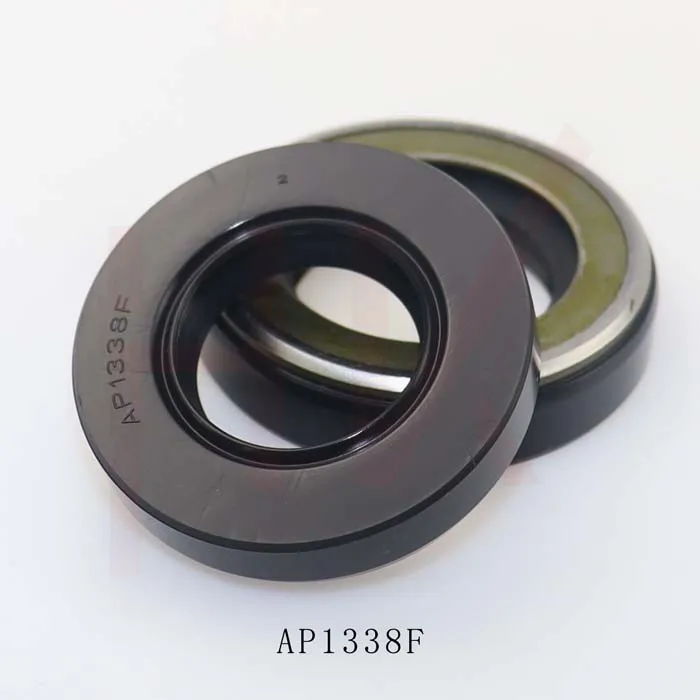Nov . 26, 2024 19:48 Back to list
Understanding Metric Shaft Seals for Enhanced Machinery Performance and Reliability
Understanding Metric Shaft Seals An Overview
Shaft seals are critical components in various mechanical systems, pivotal in ensuring the effective operation of machinery. Among the many types of seals available, metric shaft seals have gained prominence due to their standardized dimensions and versatility across numerous applications. This article delves into the importance of metric shaft seals, their design characteristics, applications, and maintenance considerations.
What Are Metric Shaft Seals?
Metric shaft seals, also known as radial shaft seals, are used to prevent the leakage of lubricants and keep contaminants out of the bearing and gear assemblies. They are specifically designed to fit shafts with metric dimensions, making them suitable for use in machinery that follows metric measurement standards. These seals come in various sizes and materials, enabling them to operate effectively under different environmental conditions and pressures.
Design Characteristics
The typical design of a metric shaft seal includes several key elements
1. Seal Body This is the main structure that fits into the housing and supports the sealing lip. 2. Sealing Lip This flexible lip makes contact with the shaft, creating a barrier against fluids and contaminants. The design and material of the lip are crucial, as they must accommodate shaft movement while maintaining an effective seal. 3. Spring Many metric shaft seals incorporate a spring that applies constant pressure to the sealing lip, ensuring it remains in contact with the shaft even as it rotates. This feature is essential in preventing leaks during operation.
4. Materials Metric shaft seals are made from various materials such as nitrile rubber (NBR), fluorocarbon (FKM), and polyurethane. The choice of material depends on the specific application requirements, including temperature tolerance and chemical compatibility.
Applications
Metric shaft seals are used in numerous applications across different industries
. Common uses include- Automotive Industry In engines and gearboxes to keep oil contained and dirt out. - Industrial Machinery In pumps and motors to maintain the integrity of lubrication systems and prevent wear. - Agricultural Equipment To protect bearings from soil, dust, and moisture, ensuring long operational life. - Aerospace In critical applications where reliability and performance are paramount.
metric shaft seals

In all these applications, the role of metric shaft seals is vital in reducing wear and tear on components, thereby increasing the lifespan and operational efficiency of machinery.
Maintenance Considerations
To ensure the longevity and effectiveness of metric shaft seals, proper maintenance is crucial. Here are some tips
1. Regular Inspection Regularly inspect the seals for signs of wear, such as cracking, fraying, or loss of elasticity. Early detection can prevent catastrophic failures.
2. Lubrication Ensure that the seals are adequately lubricated. Insufficient lubrication can lead to increased friction and wear of the sealing lip.
3. Avoiding Contaminants Keep the environment around the shaft clean to minimize the intrusion of dirt and debris, which can compromise seal integrity.
4. Correct Installation Follow manufacturer guidelines during installation to prevent misalignment, which can lead to premature failure of the seals.
5. Temperature Management Be mindful of the operating temperature; extreme temperatures can adversely affect seal material performance.
Conclusion
In summary, metric shaft seals play a crucial role in maintaining the efficiency and longevity of various mechanical systems. With their standardized design, they offer flexibility and ease of use across a range of applications. By understanding their characteristics, applications, and maintenance needs, operators can ensure a reliable performance and a longer lifespan for their machinery. Investing in quality metric shaft seals is essential for anyone looking to enhance the performance and durability of their equipment.
-
TCN Oil Seal Metal Ring Reinforcement for Heavy Machinery
NewsJul.25,2025
-
Rotary Lip Seal Spring-Loaded Design for High-Speed Applications
NewsJul.25,2025
-
Hydraulic Cylinder Seals Polyurethane Material for High-Impact Jobs
NewsJul.25,2025
-
High Pressure Oil Seal Polyurethane Coating Wear Resistance
NewsJul.25,2025
-
Dust Proof Seal Double Lip Design for Construction Equipment
NewsJul.25,2025
-
Hub Seal Polyurethane Wear Resistance in Agricultural Vehicles
NewsJul.25,2025
-
The Trans-formative Journey of Wheel Hub Oil Seals
NewsJun.06,2025
Products categories
















